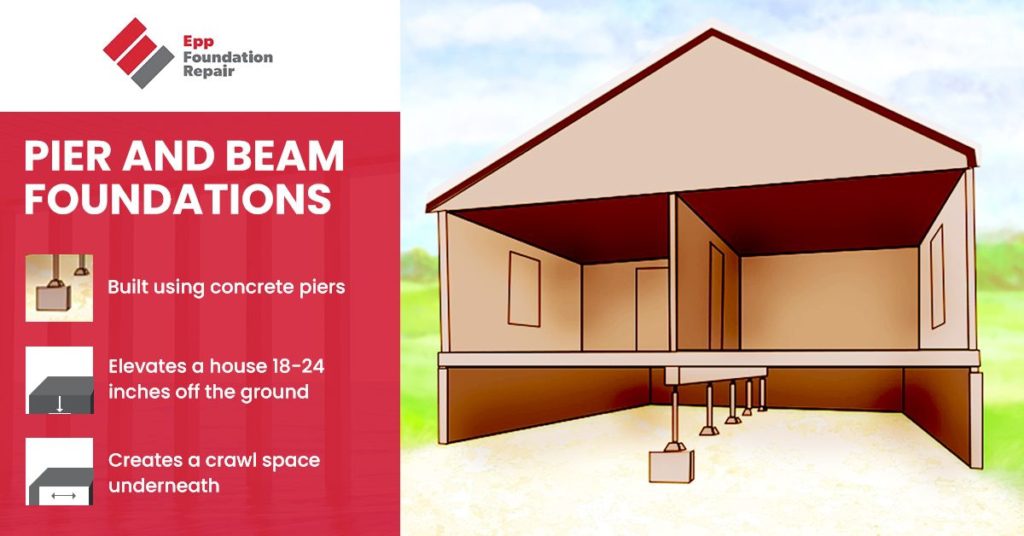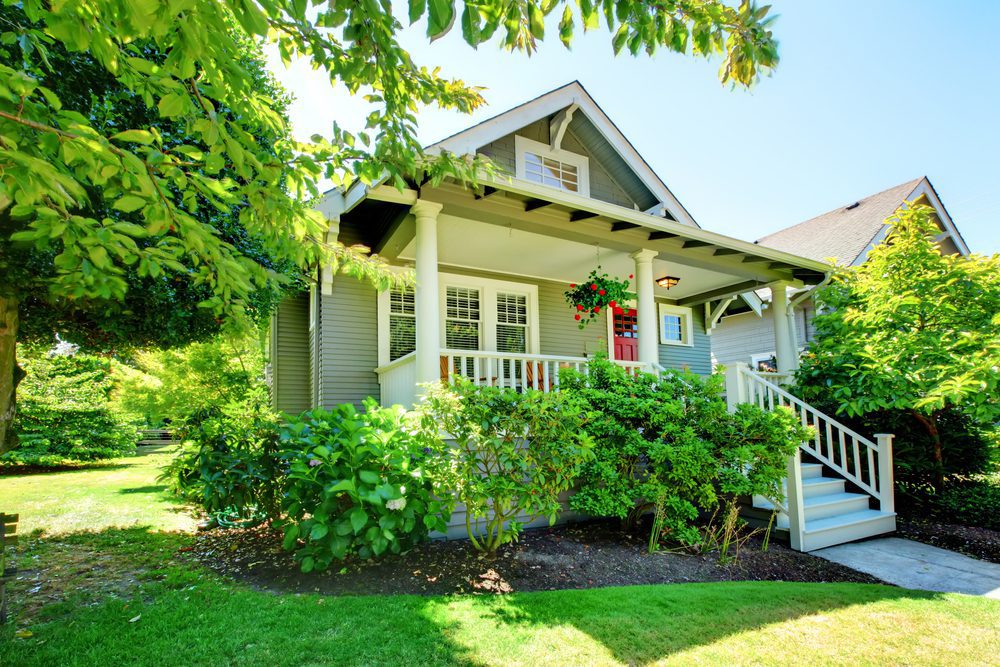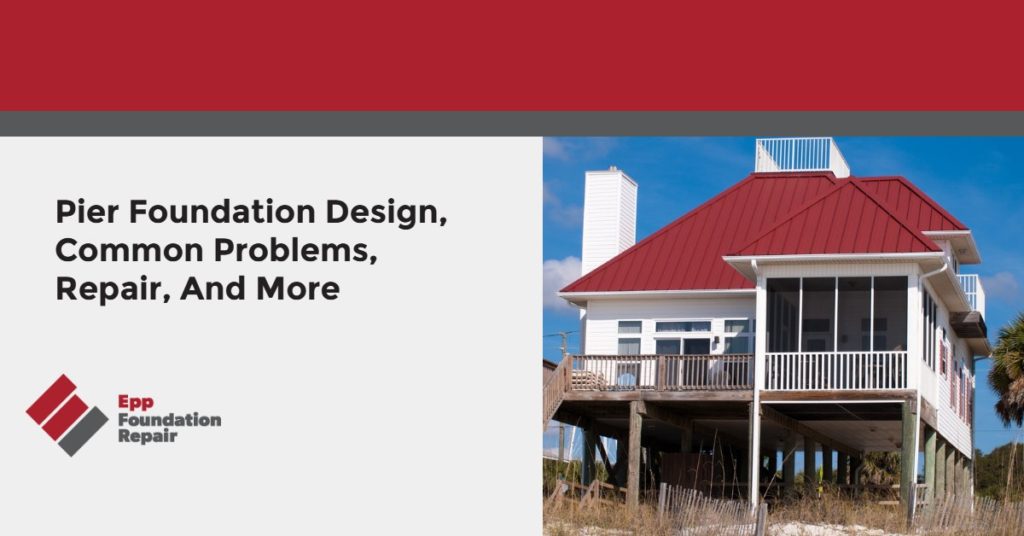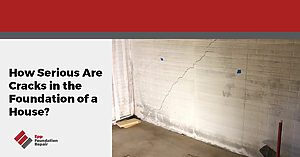A pier foundation isn’t just for beachfront property
As you can see from the photos below, homes that sit atop a pier foundation look like they’re sitting on top of big decks. Pier foundation design – also referred to as “pier and beam’’ – is common in beach communities because they protect buildings against tides.
However, pier foundations aren’t just for beachfront property. They’re found everywhere and most people know them by the term “crawl space foundation” or “pier and beam foundation”. A crawl space foundation is a pier foundation enclosed by block walls.
What is a pier foundation?
Unless the structure is in a beach community, a pier foundation raises a building 18-36 inches off the ground. (Structures in beach communities are often raised more than 36 inches off the ground.) This creates a crawl space underneath the structure that provides easy access to plumbing and electrical wiring. Waterproofed and encapsulated crawl spaces are also suitable for storage.
Before the 1960s, pier foundations were very popular. While pier foundations are still fairly common today, slab foundations have eclipsed them in popularity because they’re easier and less expensive to buil

If you own an older home with a pier foundation, chances are it has wood foundation piers. However, today, most pier foundations are built using concrete foundation piers. (Wood and brick are also used.) The piers come in various shapes – round, square, or rectangular – and sizes ranging from 6-16 inches in diameter. They’re installed to a depth below the frost line, that is, to around 5-6 feet.
Homeowners like pier foundations because they provide easy access for repairs to the plumbing and wiring. However, they probably aren’t the best choice for a large home or a home in an earthquake-prone region.
Read also: Underpinning and Piering Solutions
Benefits of a pier foundation
The advantages of a pier foundation include:
- They’re easy and inexpensive to build because the construction process doesn’t require heavy excavation or a lot of concrete – Compare with poured concrete slab foundations, where there’s the expense of delivering wet concrete to the construction site.
- They offer easy access to the home’s plumbing and wiring – With a slab foundation, it might be necessary to break up the slab to access the plumbing or wiring.
- The floor is comfortable to walk on – Because a pier foundation has some give to it, it’s easier on the feet than a slab foundation.
- Because they sit 1 1/2 to 3 feet off the ground, they’re less likely to be damaged by flooding water – This is also why pier foundations are used for beachfront property.

Problems unique to a pier foundation
Although pier foundations have been popular for decades, they aren’t without their downsides:
- They can sag and become unlevel – This can happen for various reasons, including rotted piers, piers spaced too far apart, and piers that have settled into weak soil.
- Wood piers, beams, and joists can rot – Moisture condensation can quickly build up in a crawl space, and over time this will cause wood rot which can eventually lead to a sagging, unlevel floor.
- Bad air – A dark, moist crawl space is the perfect ‘’petri dish’’ for mold and other allergens. Given that a certain percentage of air from your crawl space makes its way up into your home’s living area, keeping a crawl space clean and dry is essential.
- Pests such as termites and rodents like dark, cool spaces – Wood-gnawing insects can damage wood piers, beams, and joists, while rodent droppings can contribute to unhealthy air.
- Not enough piers – Sometimes, a pier foundation simply doesn’t have enough piers to support the house properly. More piers are always better.
- The piers aren’t big enough – Sometimes, there might be a sufficient number of piers, but they’re too small. This can also affect the ability of the foundation to support the building.
- The crawl space isn’t tall enough – Crawl spaces should be at least 18 inches tall. Anything less will make it next to impossible for repair contractors to access the plumbing and wiring. Of course, it would also make it challenging to access the crawl space for repairs to the crawl space itself.
Pier foundation repair
Steel push piers
Heavy-duty steel push piers are the most common method for repairing a settled pier foundation. They offer a minimally invasive way to stabilize and strengthen the foundation. After the piers are driven deep down into the load-bearing soil, synchronized hydraulic jacks raise the foundation.
Helical piers
Although helical piers are usually used to build new foundations, they’re also sometimes used to stabilize existing foundations, especially lightweight ones. Installation is both quick and minimally invasive. The piers are turned into the soil until they reach the load-bearing strata. Synchronized hydraulic jacks then lift the building back up.
Crawl space support jacks
Sometimes a pier foundation shows signs that something is wrong even though the foundation is perfectly sound. You might notice an uneven floor, a spongy floor, or furniture that shakes when you walk by. Since these problems are often caused by settled support posts in the crawl space or deteriorated screw jacks, the solution is to replace the posts and/or screw jacks.
Read more about: Why Your Crawl Space is Damp?
Although they’re not as popular as they once were, a pier foundation is still a great choice for a foundation because they’re inexpensive to build, last for years, and provide easy access to the home’s plumbing and wiring. However, like anything else, they’re not without their problems. If you own a pier foundation home experiencing problems and you’re in our service area in Nebraska, Iowa, Kansas, and Missouri, contact us today for an estimate.







